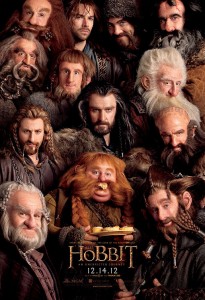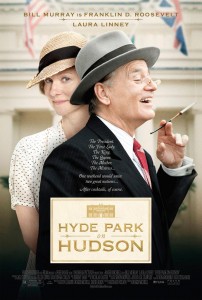The Hobbit: An Unexpected Journey
Before the adventures of Frodo Baggins (Elijah Wood), Frodo’s cousin Bilbo Baggins(Martin Freeman and Ian Holm) went on an adventure of his own. Led by Gandalf the wizard (Ian McKellen), Frodo and a troupe of 13 other Dwarfs set out to reclaim the lost Dwarf Kingdom of Erebor; an adventure that will take them into the dens of Mountain Trolls, Goblins, Stone Giants, and more as they make their return. It’s on this journey where Bilbo meets Gollum (Andy Serkis), a strange creature in possession of a magical ring, a ring with origins that will later be revealed in the Lord of the Rings. It’s also on this journey where a dark power, referenced as a Necromancer (Benedict Cumberbatch) becomes apparent to the rest of the wizard community. Forging their way to the Lonely Mountain Director Peter Jackson has broken up J.R.R. Tolkien’s The Hobbit into three films. A feat that almost feels exploitive, especially considering the actual length of the source material and the ground covered in this first film; and this is a beast of a film clocking in just under three hours in runtime. That aside, the story seems to remain true to the source material, so there’s little surprise there. Acting feels hit and miss from our ensemble. But how does it look? Well, here’s perhaps the biggest controversy and fault of the film. You see most films are shot at what’s called 24 frames per second, meaning there are 24 little pictures per second whizzing past the projector and onto the screen for your eye to enjoy. That’s a standard that looks great, what we’re used to in cinema, and has been in place for zillions of years. Why does this matter? Well, Jackson made the artistic choice to shoot the film at 48 frames per second, this would provide higher definition for action sequences and make the CGI look really amazing, but the tradeoff is that the camera’s look and movement has a distinct “Daytime Television†look to it. And, when you have Gandalf the Grey and Bilbo Baggins standing in very fake costumes on very real sets, the dichotomy is viciously distracting. Overall, this look almost dissolves the cinematic illusion and despite the high cost, looks and feels cheap. Bottom line, value wise, it’s matinee worthy but don’t hold your breath for real magic quite yet. The Hobbit: An Unexpected Journey is rated PG-13.
Forging their way to the Lonely Mountain Director Peter Jackson has broken up J.R.R. Tolkien’s The Hobbit into three films. A feat that almost feels exploitive, especially considering the actual length of the source material and the ground covered in this first film; and this is a beast of a film clocking in just under three hours in runtime. That aside, the story seems to remain true to the source material, so there’s little surprise there. Acting feels hit and miss from our ensemble. But how does it look? Well, here’s perhaps the biggest controversy and fault of the film. You see most films are shot at what’s called 24 frames per second, meaning there are 24 little pictures per second whizzing past the projector and onto the screen for your eye to enjoy. That’s a standard that looks great, what we’re used to in cinema, and has been in place for zillions of years. Why does this matter? Well, Jackson made the artistic choice to shoot the film at 48 frames per second, this would provide higher definition for action sequences and make the CGI look really amazing, but the tradeoff is that the camera’s look and movement has a distinct “Daytime Television†look to it. And, when you have Gandalf the Grey and Bilbo Baggins standing in very fake costumes on very real sets, the dichotomy is viciously distracting. Overall, this look almost dissolves the cinematic illusion and despite the high cost, looks and feels cheap. Bottom line, value wise, it’s matinee worthy but don’t hold your breath for real magic quite yet. The Hobbit: An Unexpected Journey is rated PG-13.
